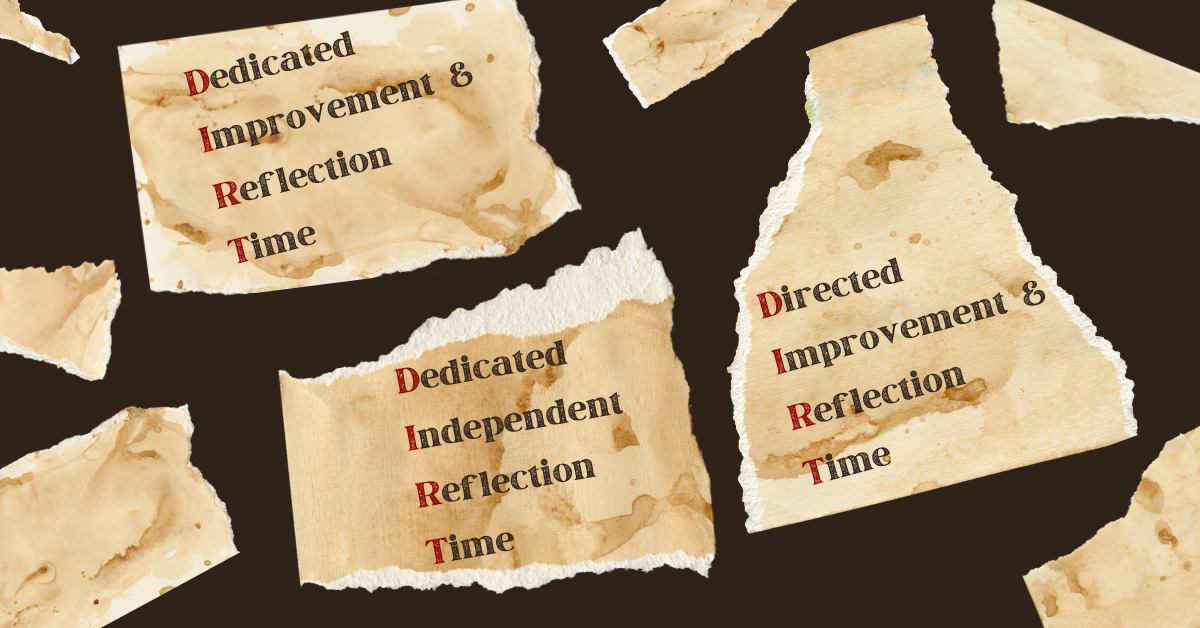
DIRT is an acronym that has a few iterations. The D can signify Dedicated or Directed, and the I can represent Improvement or Independent. The R is Reflection and the T is Time. Consequently, there are three potential interpretations, depending on the objective of the lesson or activity.
- Directed Improvement & Reflection Time
- Dedicated Improvement & Reflection Time
- Dedicated Independent Reflection Time
For students unfamiliar with the DIRT strategy, starting with Directed Improvement & Reflection Time proves beneficial. In this approach, the teacher guides students in analyzing assignments, tests, or provided feedback. Under the teacher’s direction, students examine their work and comments with the aim of enhancing or rectifying their output. Once students grasp the process, the transition to Dedicated Improvement & Reflection Time is seamless. During this phase, students work independently to reflect on and refine their work.
When the objective doesn’t necessitate improvement but reflection is vital, Dedicated Independent Reflection Time becomes the preferred choice. This designated time allows students to contemplate a concept, an assignment or assessment, a discussion, or feedback without actively working on tasks. It serves as an opportunity for brainstorming and may include collaborative efforts among peers. The crucial aspect is that the reflection time is independent from teacher intervention, fostering student responsibility for their learning.
An illustrative scenario where teachers can apply any of the DIRT strategies is in the context of writing a final draft. Students would dedicate time to review their rough drafts, considering the feedback provided by either the teacher or peers, depending on the assignment’s completion and assessment process. Subsequently, students engage in reflection, drawing insights from their rough drafts, and make improvements to craft a polished final draft.
In Directed improvement and reflection time: does it work?, Mark Esner emphasizes that the process of reflection and improvement shouldn’t be rushed, and I agree. Therefore, I advise teachers to use the DIRT strategy wisely. The utilization of the acronym is optional; the focus should be on achieving the desired outcome. Consider the lesson’s objective and what you genuinely want students to achieve. When used with a solid understanding of the strategy and an awareness of its benefits in fostering independent thinking and improving students’ work, the DIRT strategy can prove advantageous.
For further insights into the DIRT strategy, explore the following resources.





